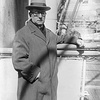
Carl Flesch Sheet Music
- Born: 9th October 1873
- Died: 14th November 1944
- Birthplace: Moson (now part of Mosonmagyaróvár) in Hungary
Carl Flesch was a Hungarian violinist and teacher. He was known for his solo performances in a very wide range of repertoire (from Baroque music to contemporary), gaining fame as a chamber music performer. He also taught at Bucharest 1897-1902, Amsterdam 1903-08, Philadelphia 1924-28) and the Berlin High School for Music 1929-34. He published a number of instructional books, including Die Kunst des Violin-Spiels (The Art of Violin Playing, 1923) in which he advocated the concept of the violinist as an artist, rather than merely a virtuoso. Among his pupils were Edwin Bélanger, Bronislaw Gimpel, Ivry Gitlis, Szymon Goldberg, Ida Haendel, Josef Hassid, Adolf Leschinski, Alma Moodie, Ginette Neveu, Yfrah Neaman, Ricardo Odnoposoff, Eric Rosenblith, Max Rostal, Henryk Szeryng, Henri Temianka, Roman Totenberg and Josef Wolfsthal, all of whom achieved considerable fame as both performers and pedagogues. He said that his favourite pupil was the Australian Alma Moodie, who achieved great fame in the 1920s and 1930s, but who made no recordings and is little known today. In his memoirs he said, "...there was above all Henry Temianka, who did great credit to the [Curtis] Institute: both musically and technically, he possessed a model collection of talents." He was consulted (as was Oskar Adler) by Louis Krasner over technical difficulties in the Violin Concerto by Alban Berg, which Krasner was to premiere. Carl Flesch's Scale System is a staple of violin pedagogy. Flesch owned the Brancaccio Stradivarius, but had to sell it in 1928 after losing all his money on the New York Stock Exchange. Flesch lived in London during the 1930s, was arrested by the Gestapo in the Netherlands in 1939, was released, and died in Lucerne, Switzerland, in November 1944.